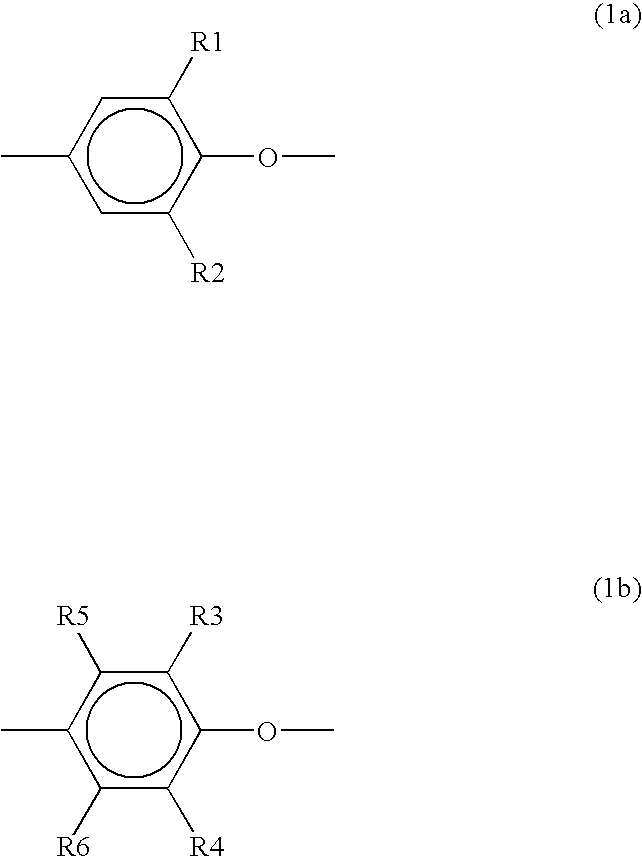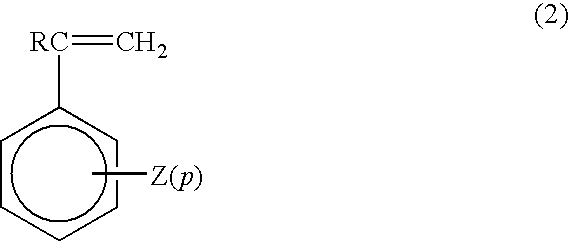Polyphenylene ether based resin composition
a polyphenylene ether and resin technology, applied in the direction of organic dyes, etc., can solve the problems of insufficient avoidance of deterioration of strong toughness and surface smoothness, large degree of deterioration of surface smoothness and impact resistance, etc., to achieve excellent rigidity, impact resistance and surface smoothness, and effective use
- Summary
- Abstract
- Description
- Claims
- Application Information
AI Technical Summary
Benefits of technology
Problems solved by technology
Method used
Image
Examples
example 1
[0064]The polyphenylene ether resin (a-1), the styrene based thermoplastic elastomer (b-3), the inorganic filler (c-2), and 2,6-di-tert-butyl-4-methylphenol (BHT) were fed from a feed port in the drive side of the twin-screw extruder, and the aromatic phosphoric ester based flame retarder (d-1) was fed from a feed port on the side surface of the extruder. The mixture was melt kneaded at a cylinder temperature of 300° C. and at a screw revolution of 250 rpm, thereby obtaining a resin composition. The test results of the physical properties of the subject resin composition are shown in Table 1.
example 2
[0065]A resin composition was obtained by repeating Example 1, except for replacing the inorganic filler with (c-3). The test results of the physical properties of the subject resin composition are shown in Table 1.
example 3
[0071]A resin composition was obtained by repeating Example 1 except for feeding a part of the polyphenylene ether resin (a-1) from the feed port on the side surface of the extruder. The test results of the physical properties of the subject resin composition are shown in Table 2.
PUM
| Property | Measurement | Unit |
|---|---|---|
| mean primary particle size | aaaaa | aaaaa |
| mean size | aaaaa | aaaaa |
| thickness | aaaaa | aaaaa |
Abstract
Description
Claims
Application Information
 Login to View More
Login to View More - R&D
- Intellectual Property
- Life Sciences
- Materials
- Tech Scout
- Unparalleled Data Quality
- Higher Quality Content
- 60% Fewer Hallucinations
Browse by: Latest US Patents, China's latest patents, Technical Efficacy Thesaurus, Application Domain, Technology Topic, Popular Technical Reports.
© 2025 PatSnap. All rights reserved.Legal|Privacy policy|Modern Slavery Act Transparency Statement|Sitemap|About US| Contact US: help@patsnap.com


